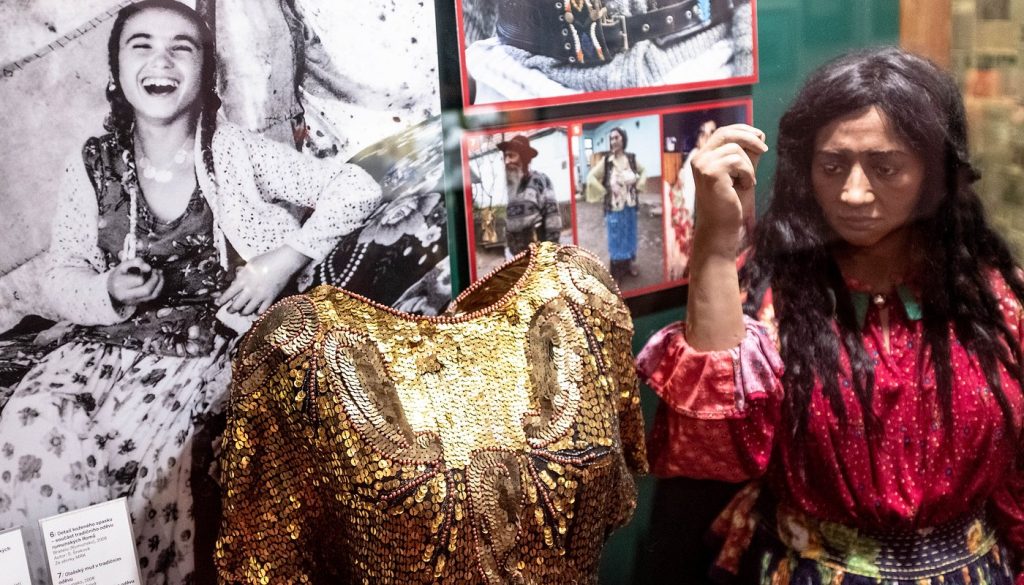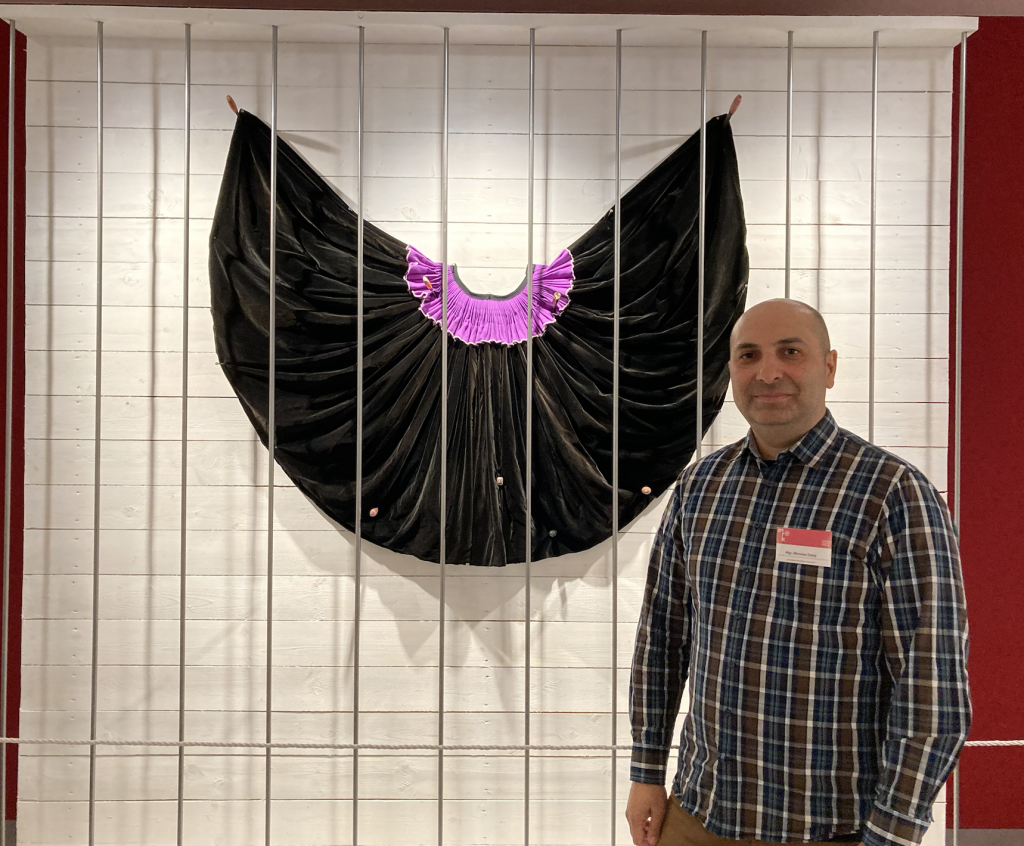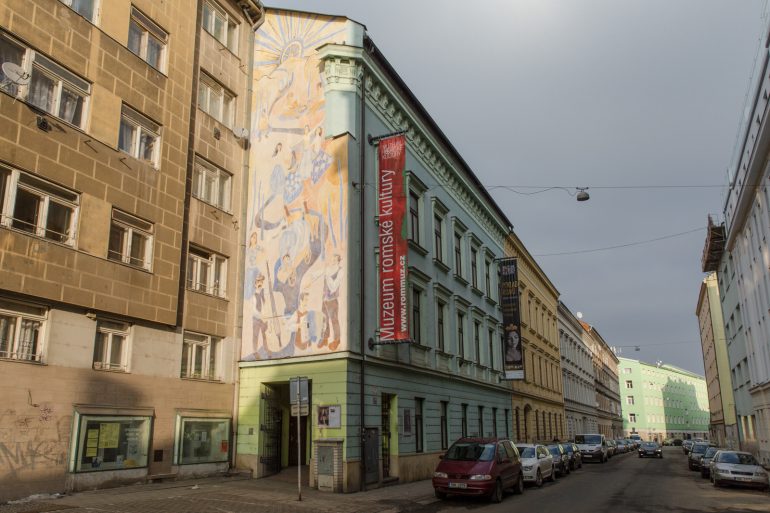Recent news about the volume of compensation claims from Romani women to the Czech Health Ministry, as part of a scheme for victims of a state-sponsored involuntary sterilisation program, has refocused attention on the litany of daily injustices faced by the community.
The Roma population of the Czech Republic stands at around 250,000, with approximately 9,000 in Brno. Despite being recognised as a national minority in the 1990s, the social and economic standing of the community has deteriorated significantly since the end of the Soviet period.
In February 2023, a report by the Council of Europe Commissioner for Human Rights found that “the Roma continue to face discrimination in virtually every area of life, including education, housing, employment, as well as in their interaction with the police”.
Interventions from international bodies such as the European Union and United Nations, as well as the tireless work of a number of civil society organisations, have pushed Czech authorities to begin taking steps to address these myriad inequalities.
Nevertheless, a shocking degree of normalised racism and institutional discrimination persists, most notably in Czech schools and in the provision of healthcare, while recent political developments have threatened to undermine any marginal progress.
—
The scandal over involuntary sterilisation, and the subsequent difficulties in securing redress for the victims, stands out as perhaps the most egregious example of racism and discrimination impacting the Romani community at the state-level.
In 1972, a public decree came into force in the former Czechoslovakia, expanding on a 1966 ‘Law on Public Health’ which described the various conditions under which sterilisations could be lawfully administered. The legislation established a framework whereby Romani women and women with mental disabilities placed in psychiatric hospitals could be sterilised without their full and informed consent. In 1979 a program of financial incentives was also launched to encourage Romani women to undergo voluntary sterilisation procedures.
The policy emerged against the backdrop of concerns about falling fatality rates among ethnic Czechs and a population ‘explosion’ among the Roma community. Indeed, while the wording of the law did not explicitly target Romani women, statistics show that they formed a vastly disproportionate number of those affected: from 1972 to 1990, Romani women accounted for 36.6% of all sterilisations, despite constituting less than 2% of the population.
In practice, Romani women were regularly transferred to local hospitals on the basis of bogus healthcare diagnoses by general practitioners, social workers, and gynaecologists, often after being falsely told they had discovered tumours in need of immediate removal. Others were sterilised during impromptu C-sections, later justified by the ‘discovery’ of complications that had occurred during procedures.
A report submitted by the European Roma Rights Centre (ERRC) further details the tactics used by healthcare officials to coerce or trick women into agreeing to sterilisation procedures. Consent was often drawn from women during childbirth or shortly beforehand, without full information being provided or understood. In other cases, nominal consent was given under pressure from public authorities who threatened to withhold social welfare benefits, terminate employment, or remove children from their care.
Guidelines in the legislation from the communist period continued to apply until 2011, with the last known involuntary sterilisation occurring in 2007. Since then, the process to achieve compensation has been arduous and further obstructed by a lack of cooperation on behalf of the Czech state.
The ERRC first raised the issue with the government in 2004, but the women who were sterilised against their will did not receive an official apology until 2009. Despite the recommendations of an ombudsman, the Czech government continued to deny “any systemic practise of sterilisation”, and in 2015 plans for a compensation scheme put forward by a working group from the Government Council for Human Rights was rejected, with no reason given.
While a handful of women did receive individual compensation payments from the government, most seeking redress were frustrated by a three-year statute of limitations from the point of official acknowledgment of sterilisation, meaning that the majority were prevented from bringing civil claims for damages to court.
It was not until 2021 that the Czech Senate passed a law establishing a system for awarding compensation to victims, which came into force in January 2022. The legislation states that any person who underwent sterilisation without “free decision and information about the consequences” between 1 July 1966 and 31 March 2012 is eligible to receive CZK 300,000 (equivalent to about €12,000) from the state.
Last month, the Czech Health Ministry reported it had paid over CZK 188 million in compensation for illegal sterilisations since the passing of the new law, granting CZK 300,000 to 629 women out of 1,296 claims processed, with hundreds of others still pending. At the time of writing, the Czech Health Ministry had received 1,979 compensation requests, 1,400 of which have been processed and less than half approved.
In October last year, Ombudsman Stanislav Krecek criticised the government for ‘administrative mistakes’ which led to applications not being processed by the necessary deadlines, resulting in delays to victims receiving payment. The majority of the claims were also made by elderly citizens; Krecek argued that they were not sufficiently informed of their rights by the relevant officials whose job it was to clearly communicate information about the compensation scheme.
Indeed, for many, the muted response from the Czech state reflects the indifference and even active support of many Czechs towards the policy of sterilisation enacted on the Romani community. Miroslav Zubaj, a Slovak member of the Romani community who works as a tour guide at Brno’s Museum of Romani Culture, believes that sterilisation is “something that many Czech people still want”.
—
The Museum of Romani Culture was founded in 1991, in part to combat the racial prejudice and dehumanisation that lie at the centre of the sterilisation scandal. In 2005, it came under the administration of the Ministry of Culture and now plays a key role “in preserving and displaying Roma history and culture”, according to a recent government strategy document for improving the social standing of the community.
In addition to its large depository of Romani cultural artefacts, jewellery, and musical instruments, the museum runs a number of educational programmes for visiting school groups.
Children are first taught about the long history of the Roma in Europe, who are believed to have arrived from India in around the 11th century. Following exhibitions explore famous Roma figures from the Czech Republic and around the world, as well as similarities between the Romani and Czech languages. The museum also works in cooperation with the Jewish Museum in Prague to deliver classes on the Porajmos, the Romani Holocaust, in which approximately 500,000 Roma and Sinti were murdered by the Nazis.

Students are then asked to think about what stereotypes they and others might hold about different groups – including why the area where the museum is located, which has a high proportion of Roma living nearby, is nicknamed the ‘Brno Bronx’ – before being given the opportunity to meet and ask questions of members of the Romani community.
Miroslav, who is in charge of delivering the sessions, believes that this activity is particularly important: “This programme changes the position and the thinking about the Roma. Because many Czech students or Czech people (have) never met Roma. They know nothing about the Roma. Because in the Czech curriculum in the schools there is not (much) information, maybe two, three sentences in history”.
Indeed, the museum’s educational programmes take place in a country where successive governments have failed to address long-standing institutional discrimination and segregation of Romani children within and between schools.
The ERRC has detailed how Romani children have been “systematically segregated” into different classes since the late 1950s, while a 2023 report published by the US State Department found that 26% of primary school students attending segregated programs were Romani, despite comprising only 3.5% of the total school population. The ERRC suggests that meaningful action to tackle this issue has been “virtually absent in the country over the last 20 years”.
Particular attention has been afforded to the number of Romani children from disadvantaged backgrounds placed into classes for children with special educational needs, via the use of a controversial diagnostic method. In 2020, 29% of the students whose curriculums had been modified for these reasons were Romani.
In December 2022, following the Czech Ombudsman’s recommendations for desegregation, the European Commission Against Racism and Intolerance found no ‘tangible results’ from the action of the government towards improving educational inequalities. Miroslav is similarly dismissive about the state’s efforts to address segregation in Czech schools: “officially yes, but the reality is different”.
A subsequent report by the Ministry of Education found that zero progress had been made on desegregation, and there had been no reduction in the share of Romani children in segregated classes.
That same year, Senator Jana Zwyrtek Hamplová (the Independents) caused controversy during a debate in the Czech Senate by outright rejecting the prospect of greater integration, saying: “It’s a beautiful idea. In reality, it cannot be implemented, because we would be harming those children who are unaccustomed to a certain ethnicity. On the contrary, maybe if separate classes were made for the Romani children we would be building their equal opportunities for the future.”
Despite such interventions from senior political figures, Miroslav believes that the real problem lies at the local level, with parents and educators who are unwilling to take measures that would improve integration.
He tells me that the standard of local schools is inadequate, and that many parents want to move their children elsewhere, but are unable to find any schools willing to accept them: “They don’t want Roma people in their schools”. One colleague, who speaks ‘good Czech’, was offered a place at a school by the director over the phone, only to be told when they arrived in person that there had been a mistake and there were no more free spaces available.
In October, the European Commission accused the Czech Republic of failing to comply with the European Union’s Race Equality Directive, which deals with combating racial and ethnic discrimination, citing the prejudicial treatment of Romani children in Czech schools as its primary example. The government in Prague now has two months to respond and explain how it will address the problem, before the case is presented to the European Court of Justice (ECJ).
—
Desegregation has been touted as one initial step in tackling the pervasive, normalised racism experienced by the Roma community on a daily basis.
According to government data, Romani people remain the most likely group to suffer hate crimes, while complaints of police brutality are common. In June 2021, a young Romani man called Stanislav Tomáš died in an ambulance after a police officer kneeled on his neck for several minutes, drawing comparisons to the murder of George Floyd, but a muted response from senior politicians.
A 2023 study by the Hate Free Culture group suggested that negative perceptions of the minority remain widespread: 84% of respondents said they would support state assistance provided to a woman who had just given birth to triplets, with this number falling to 58% if they were Romani. Only 50% of young people said they would rent an apartment to a Romani tenant, up from 31% in 2014.
This animosity is familiar to Miroslav, who says he hears racial slurs every day, in addition to the daily emails received by the museum containing racist abuse: “Many local(s) still hate Roma people…We fight every day with discrimination, with racism.” He tells me an anecdote about a colleague who responded to a job opening, before being informed that the vacancy had been filled. His cousin, who has blue eyes and paler skin, later inquired about the same position and was offered the job.

The arrival of Romani refugees fleeing the war in Ukraine has further underlined the “deep-rooted prejudices” which still exist in Czech society, according to a report by a Commissioner for the Council of Europe. In June, the ERRC found that Roma refugees have been denied access to adequate housing and basic reproductive healthcare services, forcing many Romani women to return to Ukraine to receive treatment.
While the Museum of Romani Culture worked with the City of Brno to help ensure clothing and food was distributed among the new arrivals, Miroslav speaks angrily about the treatment of Romani refugees compared to white Ukrainians, and how the latter group were given support and provisions while the former were left without anywhere to stay: “It was terrible, a terrible (thing to see)… Living in a tent in the 21st century…They had fever, there were diseases”.
—
Responding to widespread international condemnation, Czech officials have pointed to various steps taken over recent years to address the problems faced by the Romani community.
In 2021, the Czech government published a nine-year plan for Roma: ‘Equality, Inclusion, and Participation’, designed to help establish effective government systems to combat ‘antigypsyism’, improve civic and political participation, and address unequal outcomes in education, health, housing, employment, and levels of poverty. The document begins with the admission that “trends leading to marginalisation, social exclusion and the territorial segregation of some Roma people continue to persist”.
On the recommendation of the strategy, the Fiala government established a new Government Commissioner role, responsible for Roma Minority Affairs, and appointed Lucie Fuková to the position in 2022. In April, Fuková announced that the Czech government was formally adopting the International Holocaust Remembrance Alliance’s (IHRA) non-legally binding definition of ‘antigypsyism’.
The IHRA describes antigypsyism as a “multi-faceted phenomenon that has widespread social and political acceptance”, taking its form in “individual expressions and acts as well as institutional policies and practices of marginalisation, exclusion, physical violence, devaluation of Roma cultures and lifestyles, and hate speech directed at Roma as well as other individuals and groups perceived, stigmatised, or persecuted during the Nazi era, and still today, as “Gypsies.””
Projected right-wing populist gains in next year’s national elections, however, have threatened to undermine even the marginal progress that has been made so far. Former Prime Minister Andrej Babiš, whose anti-migrant ANO are expected to become the largest party, has a long-history of inflammatory anti-Roma comments, including downplaying and relativising the extent of the Romani Holocaust.
In 2016, Babiš made a speech in which he claimed that the Lety concentration camp – in which 1,303 Roma were imprisoned and 327 murdered, with 500 more transferred to Auschwitz – was merely a ‘work camp’ for the unemployed.
The site of the camp has long been a source of controversy among the Czech Roma community, due to its use as a large-scale pig farm until 2017. Sustained pressure from various civil society groups eventually led to the government buying back the land and erecting a memorial to the victims, which is now under the administration of the Museum of Romani Culture.
Babiš was also one of many politicians who responded with crass indifference to the police murder of Stanislav Tomáš, saying that while Tomáš’s death was ‘sad’, “a normal, respectable person would have a hard time getting into such a situation”.
The ANO leader has also obfuscated on the question of whether he would rule out a coalition with the far-right, anti-Islam, and anti-Roma, Freedom and Direct Democracy (SPD), led by Tomio Okamura. Okamura has himself been investigated by Czech police for anti-Roma speeches, in which he claimed that there were no fences restricting movement at Lety and that prisoners could “come and go as they pleased”.
The spectre of an ANO victory, therefore, compounds the fear that despite recent glimmers of hope, the condition of the Romani community in the Czech Republic is unlikely to improve in the near future. Inequalities in housing, education, and employment remain stark, and the racism to which Romani citizens are subjected is still commonplace.
For Miroslav, this is why the work of organisations like the Museum of Romani Culture is so important. For many, he says, “if you are born here, into (the Romani) community, it’s as if you will never be like another person in the Czech Republic. There is the problem.”








